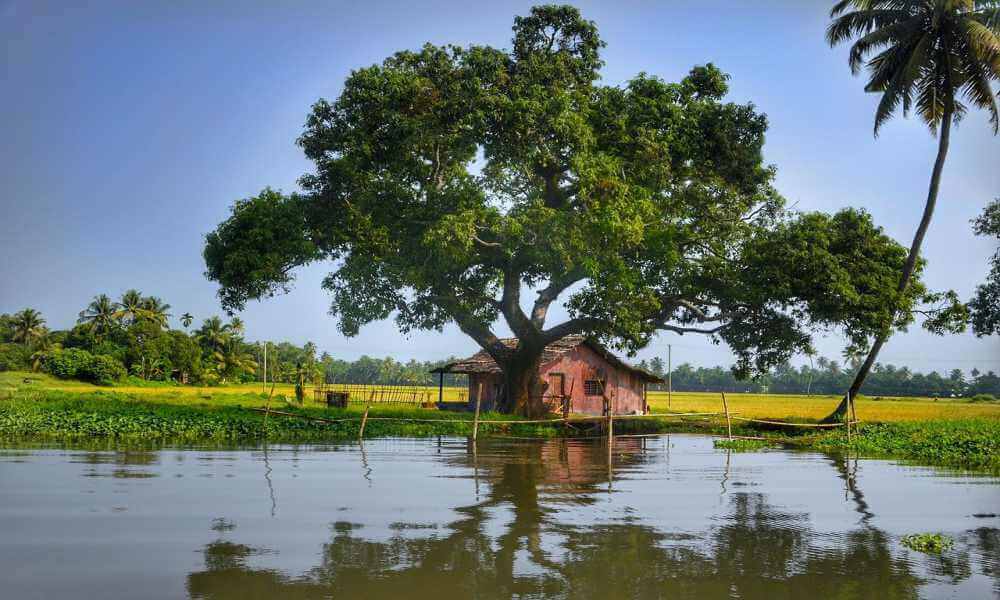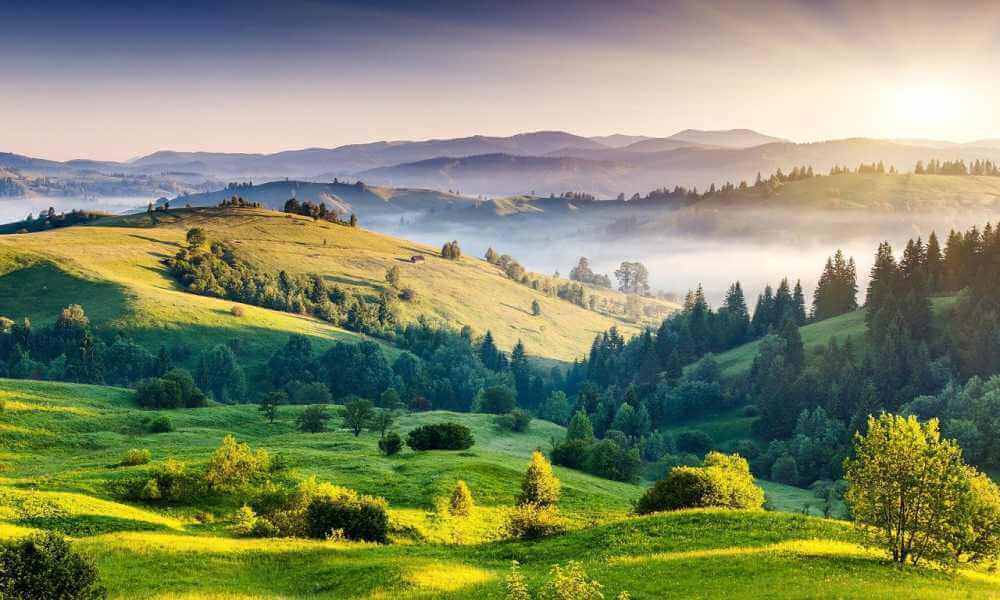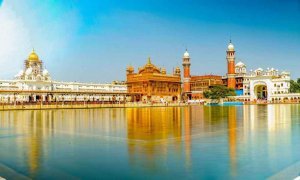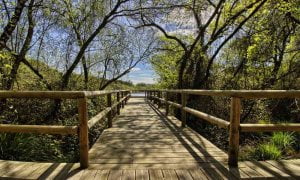Nature Based Tourism: The experience involves and revolves around the area’s natural products and will include either or all of these animals, plants and human cultural variety. Certain principles that have to be included and made a part of the plan are: Geographic and Historical Education; Resource Use with Sustainability; Zero Environmental Degradation; Adding to the Region’s Sustainable Development; Respectful of Local Societal and Cultural Norms; and Merging it with health business and tourism.

The importance of nature based tourism for a destination can be multiple. Nature has a high stake in attracting tourists to a place. Tourism is not a single industry but is a multi dimensional. Often the studies have focuses don considering nature tourism with tourism activities done in nature areas, where the players are visitors and their experiences in a nature based environment or of nature itself.

Often nature based tourism is confused with ecotourism or green tourism which is incorrect. Ecotourism is a higher version where travel is to fragile, protected and virgin areas where tourists are engaged in a way that they have minimal effect on natural-social and cultural fabric of the place. Thus Nature based tourism is a universal set where ecotourism is a sub set. Ecotourism also takes note of the attitude of the visitor, visitor’s knowledge and defines how ecotourism should proceed nature based tourism is free from all these shackles. Nature is an inseparable part of elements of tourism and is one of the expectations of the visitor for any destination.
Who is a nature based tourists and who is not is not an easy task to define as a tourist may be attracted because of nature at a place but whether he/she will practice and indulge in nature based activities is questionable. Because of improper definitions even getting the size of the segment and collecting statistics, doing research is a challenge faced by many. One way such tourists can be recognized are the activities that the tourists undertake and the amount of involvement they do with the nature and the overnight stay aspect that can solve the definitional issue. But in such a scenario often outdoor recreationalists also comes in the segment of nature based tourists.
Often the service providers for nature-based tourism are not properly segregated or classified. Often in economic terms also it is solely the activity that is counted rather than the accommodation, transportation and food services that they take. So we get a part of their economic effect.
CATEGORIES OF NATURE BASED TOURISM / TOURISTS
Nature based tourism can be classified into many categories depending on the place, kid of activity, motivation or reason, and the type be it sustainable, organized or commercial. It provides ease in quantifying tourism and tourists on nature based basis and helps to produce concrete statistical results. Tourist classification can also produce nature based tourism segmentation. Few studies recognize six kinds of nature-based tourists:
Committed Nature Tourists– these tourists are few in number who does not only admire nature but takes step to conserve it, they show action.
Interested Nature Tourists- Such type of tourists shows a concern and interest in nature tourism but lacks a deep commitment towards the nature.
Casual Nature Tourists– they are combining a vacation with a visit to the nature based areas.
Nature Tourists- these tourists have certain very fixed cultural inklings.
Sport or Adventure Tourists- These type of tourists are interested in sports or in involving in adventure in natural areas.
Hunting And Fishing Tourists- For such type of tourist’s nature is just a ground for their activity and entertainment.
DEMANDS FOR NATURE BASED TOURISM
Nature based tourism in its broadest of meanings is a part of ever-growing tourism industry. The quest of tourist for something new and not experienced before is what is giving rise to such a phenomenon. The understanding of the human role in global degradation an destruction is much clearer than before, thanks to all the researches that have been done and studies undertaken. The consumers too have awaken and so does tourists and have started asking for sustainable substitutes and sustainable products. Alternative tourism, which is a shift from mass tourism or an escape from mass tourism, is a result of this new consumer awakening in the tourism industry. The tourists will now like small scale tourism and will move in smaller groups. The tourist will avoid more crowded and busier tourists centers. The tourists tend to skip mass organized events and trips. They would seek more original, authentic, and more localized experiences and interactions. Nature based tourism in many ways provide a good option to Alternative Tourism Seekers. Such experiences are more readily available in countryside and rural environment and have less of tourism development. Yet sacrificing the amenities and services for tourism is not easy.
Thus Nature Based Tourism is a global industry with economic and social importance both at local and global regions. Thus nature based tourism talks about the tourists experience and activities in nature while visiting the natural areas.
CULTURAL ASPECT
Nature based tourism does not involve shunning out people. It includes culture as an inseparable part of culture. It respects people’s viewpoint and the interactions with them. Cultural tourism actually can exist with natural tourism and can even support or complement it. Cultures are not only objects but also way of life. Culture “is both traditional and creative and it has both ordinary common meaning (way of life) and unique individual meanings (art and learning)”. Natural tourism is interested with ordinary common meaning i.e., way of life. This has given way to the broadest classification nature based attractions and cultural attractions. These both can be written under one head, which is Recreational Tourism.
There is a interdependence between cultural and natural tourism. Example can be ice fishing safaris; they are done in nature, have unique natural environment but has cultural element in it.

The three elements are important for tourist attraction — “the environment to observe, activities to participate and experiences to remember”. If environment here is nature then activities and experiences can be cultural too, proving the complementing relationship between the two. Rather a cultural element enhances the nature based tourism experience.
DEVELOPMENT OF NATURE BASED Tourism PRODUCT
Products can be services too and especially this is true in the case of tourism. There has to be an element of differentiation to position a product, be it service product in the market. It is not about high quality of a product but one need a good story behind the product too. This story should generate tourist involvement, deep connection and should move the tourists. The 6A’s of products have to be remembered
- ATTRACTIONS
- ACCESSIBILITY transport to and inside the destination
- ACTIVITIES Tourists is out to do it.
- AMENITIES these are services including accommodation, food etc.
- AVAILABLE PACKAGES The bundling of various services.
- ANCILLARY SERVICES Routine services not related to tourism.
These have to be built and a story has to be created behind it. It should be services and much beyond it. Creating stories and enhancing the appeal of the product is a tough balance. Kotler’s model present the five stages and how higher customer value can be attained.
First is the core benefit, is the service per se which the customer is buying egs snowmobile safari. Second Stage the core benefits transform into Basic Product egs. Renting of snowmobile and the guide services.
Third is the Expected Product. The features and characteristics that a tourist expects from a product egs a modern snowmobile, polite guide and a fun ride.
Fourth is the Augmented Product it should create a wow effect and exceed the expectations of the customer. Egs. The story behind the product and additional values.
Fifth step is the Potential Product all the augmentations and transformations a product may face in the coming times. Noveau ways for product distinguishment and customer satisfaction are searched.
Product development is an ongoing phenomenon and cannot be done in isolation. Market research and marketing are inseparable part of product development. Value chain has to be kept in mind which is creation of more customer value.
Stephen Smith presents a model which relates more closely to the Nature based Tourism.

The First element in this is the PHYSICAL PLANT. This is crux of tourism product and in this case may be a natural site, facilities, weather etc. It is physical which tourists want to witness.
Second element is SERVICE. The physical part needs some sort of service to establish a link with the tourists.
HOSPITALITY is the third element it is beyond great service quality but something extra. Hospitality define dthe way the task is being accomplished. Hospitality is comprehensive and less measurable. FREEDOM OF CHOICE is the fourth element which refers to the choices or the options that customers needs to take for making it satisfactory. There can be surprises also.
INVOLVEMENT here means complete engagement of the customer. These combinations of five elements in nature based tourism product can yield high quality and satisfying product.
Product development is not easy the product should meet the needs of the target market deals with request and expectation of the target market and add customer value.
SUSTAINABILITY ISSUES
Nature based tourism product development is incomplete without the issues of sustainability and the stakeholder’s participation. Stakeholders are any cohort or a person who has a power to affect or get affected by attainment of organizational’s objective.Stakeholder and sustainability are related in the sense that sustainability is the responsible attitude towards stakeholder’s, the environment and the economy. Responsibilities can be of variety like legal, ethical and economic. There can be multiple stakeholders where emphasis has to be on communication, interaction, win-win solution finding processes, equity and equitable representation of stakeholders.
Sustainability may look like a wastage of time but communicating with stakeholder’s for day to day operations and developments too create a strong base, results in environmental preservation and avoidance of negative attitude from different quarters. Overall it creates benefits.
Nature and Wildlife make India stands at the tenth position as a mega biodiversity country in the globe because of large variety of flora and fauna that exists. Its number is fourth in Asia. The Indian soil, land, climatic conditions, rainfall, temperatures and different seasons support the growth of natural areas. Southwest monsoons and also retreating monsoon elongate the rainy season. Approximately twenty two plus percentage of India’s total area is covered by the evergreen forests, which results in two per cent of the global forest cover. India has a variety in terms of vegetation and can be demarcated as Tropical rain Forests, Tropical Deciduous forests, Tropical thorn forests and shrubs, Mountain forests, Mangrove forests and Tropical rain Forests. There are commercial and non commercial trees growing in these regions. This abundance of food and cover helped wildlife to grow like elephants, lemurs, one-horned rhinoceros, deers, wild boars etc. The government is also ensuring steps to conserve this. There are fourteen defined biosphere reserves in the country. Botanical gardens are funded since the year 1992. There are various projects like project tiger, project rhino etc being run time to time. There are well defined national parks eighty nine in number, wildlife sanctuaries forty nine in number and many zoological gardens and wildlife conservations centres set up all over India.
The Indian Natural Tourism Products have a variety of natural resources such as areas, climate, landscape and natural environment. These attract tourism to India. India’s natural tourism products are in a variety and can be classified as:
- COUNTRYSIDE
- CLIMATE— Temperature, Sunny Days, Snowfall, Rains
- NATURAL BEAUTY — Mountains, Hills, Deserts, Gorges, Backwaters, Terrains etc.
- WATER — Lakes, Rivers, Ponds, Springs, Waterfalls, Sea, Oceans
- FLORA and FAUNA
- WILDLIFE
- BEACHES — Rocky, Sand, White Sand etc.
- ISLANDS — Lakshadweep, Andaman, Nicobar etc.
- SPAS
- SCENIC ATTRACTIONS
Natural resources hold importance for developing tourism in the country. Ecotourism trails have been introduced to conserve resources. Lakes, rivers, sanctuaries and adventure sport points have been demarcated for touristic activities. Attached to this is the five thousand old histories twined with the products to provide a boost to tourism.
Indian weather variety adds to overall holiday experience. The population from the extreme climate areas of the globe move from one country to another. Having winter warmth, winter sunshine, is also nature’s benevolence. India has many upland cool areas which have been developed by the Britishers as “Hill Stations”. The mountains especially the mighty Himalayas, Vindhayas, Satpuras etc. Canyons, Coral reefs, Cliffs, Peaks are all attractions. Waterforms like canyons, geysers, lakes, waterfalls, backwaters of Kerala, Dal lake etc. attract tourists and provide recreational facilities. The forests of North Eastern states alongwith their wildlife attracts all. Trekking, rock climbing, wind surfing, scuba diving, mountaineering, canoeing and kayaking are sports that needs nature and India has abundance of places for its practice. Kerala with its serenity, greenery offers ayurvedic resorts and spas. Rishikesh, Haridwar etc. have become hub for spiritual and holistic retreats combing nature and wellness. Islands are full of flora and fauna. Thus islands are an ideal getaway for adventure, nature and cultural lovers. The topography of Islands is all encompassing and provide exotic flora and fauna as an add-on.




